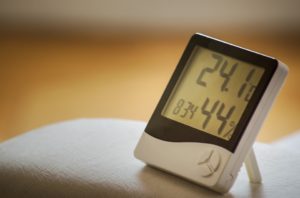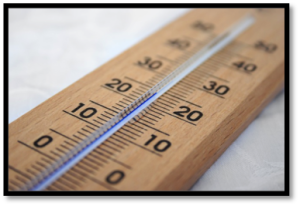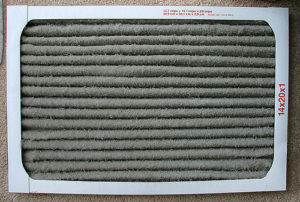 Some jobs, like construction and manufacturing, put workers at a greater risk of experiencing a serious accident. However, there are many other professions that pose a less obvious threat. Some common occupations can actually put your lungs at risk for conditions like asthma, fibrosis, cancer, COPD and infections.
Some jobs, like construction and manufacturing, put workers at a greater risk of experiencing a serious accident. However, there are many other professions that pose a less obvious threat. Some common occupations can actually put your lungs at risk for conditions like asthma, fibrosis, cancer, COPD and infections.
Jobs like construction and manufacturing are often thought of as dangerous because of the risk of equipment-related accidents. However, these jobs also expose workers to asbestos, volatile organic compounds (VOCs), dust from demolitions, or to the risk of inhaling microscopic fibers and metals. These risk factors can contribute to conditions like asthma, lung cancer, and mesothelioma (another type of cancer). Firefighters can also be exposed to harmful building materials, but can reduce their risk of exposure by using a “self-contained breathing apparatus” (SCBA).
Housekeepers are regularly exposed to cleaning chemicals, which can also emit VOCs. These VOCs can cause allergic reactions and lead to long-lasting breathing problems. While cleaning, housekeepers can run fans and open windows in an effort to improve ventilation in the area. Cleaning with vinegar, baking soda and water are effective alternatives to commercial cleaners, and are less irritating to the lungs.
Hair stylists are also regularly exposed to chemicals, but from hair-coloring and straightening products instead of from cleaners. Hair-coloring products can cause asthma, and hair-straightening products contain formaldehyde, a carcinogen. Health care workers with a sensitivity to latex can experience asthma-like symptoms, but latex-free synthetic gloves can be an effective alternative.
For workers with work conditions that can damage their lungs, it’s important to wear protective gear like masks and special breathing apparatuses. Working in well ventilated areas can also make a positive difference. Managers and employees should make an effort to understand job-related health risks, and utilize equipment that protects them from harmful chemicals and dust.
Additional Resources:
- Health, “10 Worst Jobs for Your Lungs”
- Huffington Post, “Unhealthy Jobs: 10 Worst Career Fields for Your Lungs”















 Have you ever experienced
Have you ever experienced  North Carolina has famously high humidity levels and high humidity can lead to mold, mildew and dust mites in the home. High humidity can also make breathing more difficult for those with allergies. The drier, less humid winter months bring a new set of challenges for managing asthma symptoms affected by
North Carolina has famously high humidity levels and high humidity can lead to mold, mildew and dust mites in the home. High humidity can also make breathing more difficult for those with allergies. The drier, less humid winter months bring a new set of challenges for managing asthma symptoms affected by  Both the changing seasons and Holiday traditions can pose challenges for asthmatics, but there are a few small adjustments you can make to breathe easy during the Holidays.
Both the changing seasons and Holiday traditions can pose challenges for asthmatics, but there are a few small adjustments you can make to breathe easy during the Holidays. Cigarettes used to be marketed as a trendy and cool, but they’re increasingly being replaced by e-cigarettes. The
Cigarettes used to be marketed as a trendy and cool, but they’re increasingly being replaced by e-cigarettes. The 
 Part I: How to Lessen Asthma Symptoms by Addressing Indoor Air Quality, I explained how improving indoor air quality with the right air filters is key to managing asthma symptoms. In Part II of this series, you’ll learn how to manage indoor humidity levels to prevent mold growth.
Part I: How to Lessen Asthma Symptoms by Addressing Indoor Air Quality, I explained how improving indoor air quality with the right air filters is key to managing asthma symptoms. In Part II of this series, you’ll learn how to manage indoor humidity levels to prevent mold growth. Vacuuming with a HEPA vacuum cleaner, dusting, and regularly changing bedding are all important steps to take care of allergens in your home. Asthma sufferers should also frequently change return air filters in their HVAC system to capture particulates; monitoring humidity levels in the home to manage mold is also beneficial.
Vacuuming with a HEPA vacuum cleaner, dusting, and regularly changing bedding are all important steps to take care of allergens in your home. Asthma sufferers should also frequently change return air filters in their HVAC system to capture particulates; monitoring humidity levels in the home to manage mold is also beneficial. A season normally filled with joy can turn miserable quickly. Seasonal allergic rhinitis and asthma sufferers can breathe relief as most outdoor allergens disappear until spring, but holiday gatherings and increased time spent indoors means more exposure to different allergen triggers. In an effort to help you avoid the hazards of the holidays, we’ve compiled some tips to keep you from wheezing and sneezing.
A season normally filled with joy can turn miserable quickly. Seasonal allergic rhinitis and asthma sufferers can breathe relief as most outdoor allergens disappear until spring, but holiday gatherings and increased time spent indoors means more exposure to different allergen triggers. In an effort to help you avoid the hazards of the holidays, we’ve compiled some tips to keep you from wheezing and sneezing.









